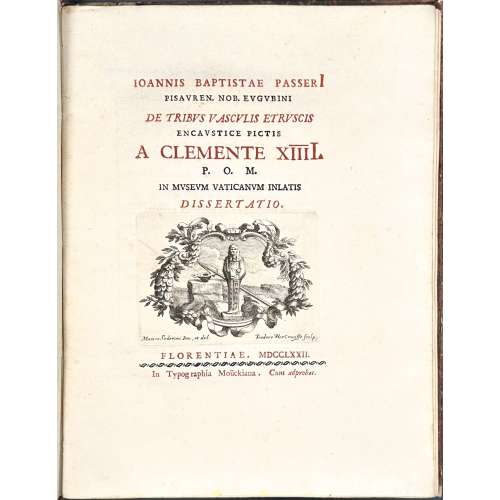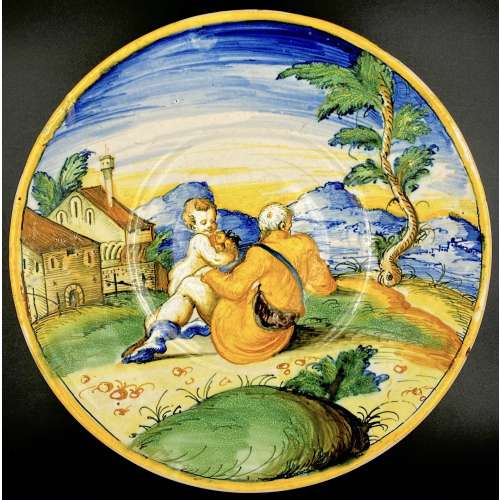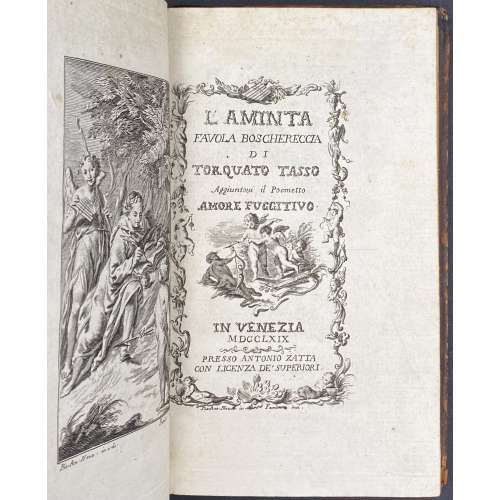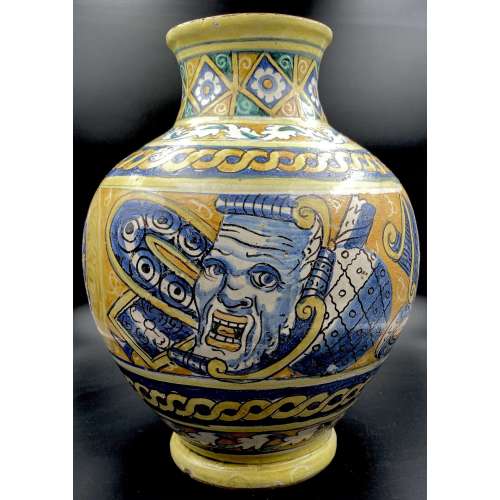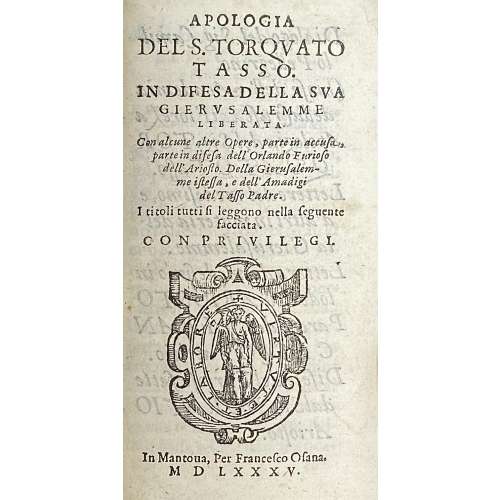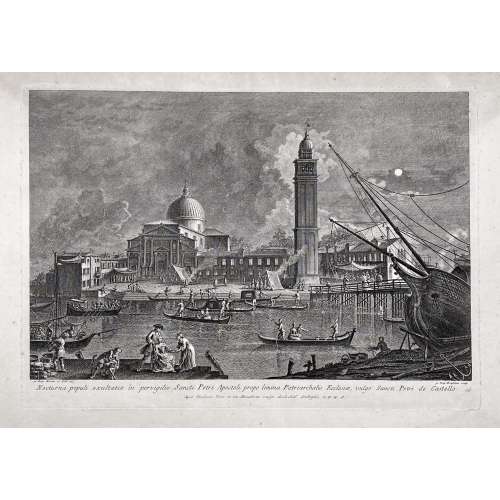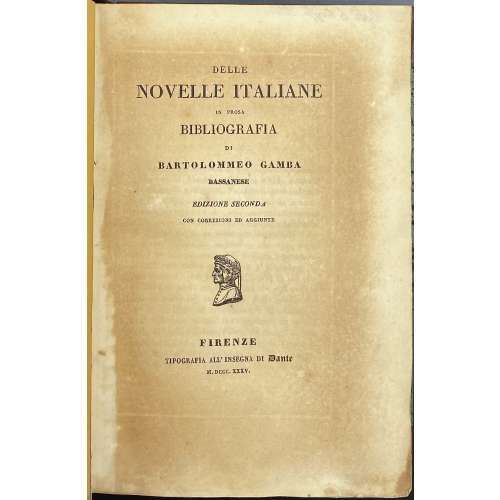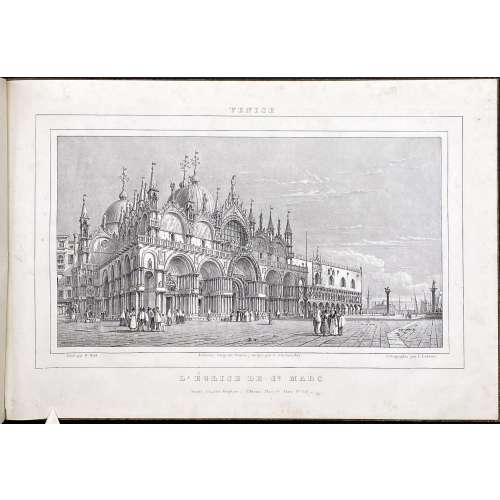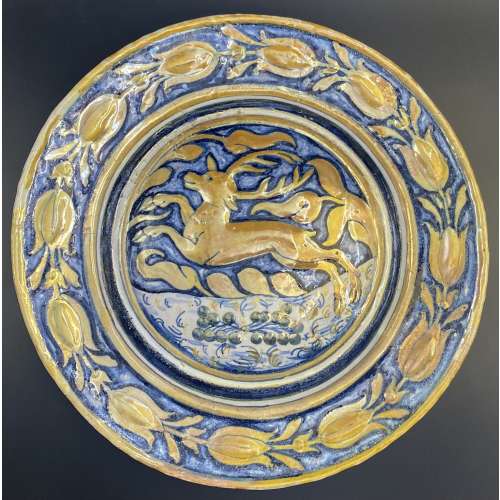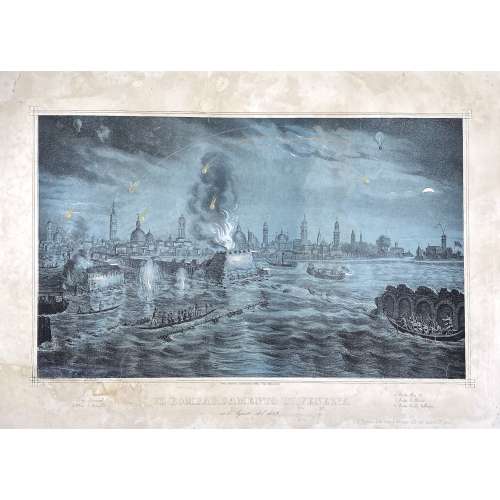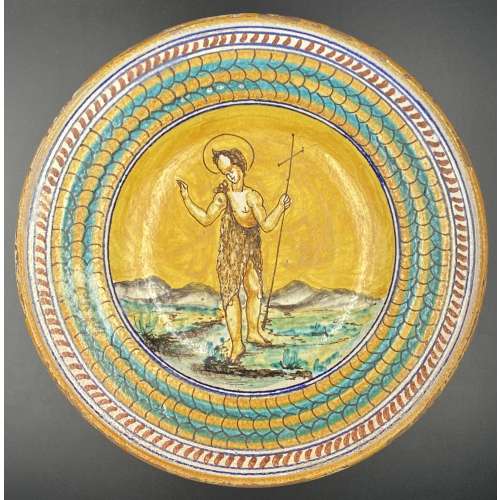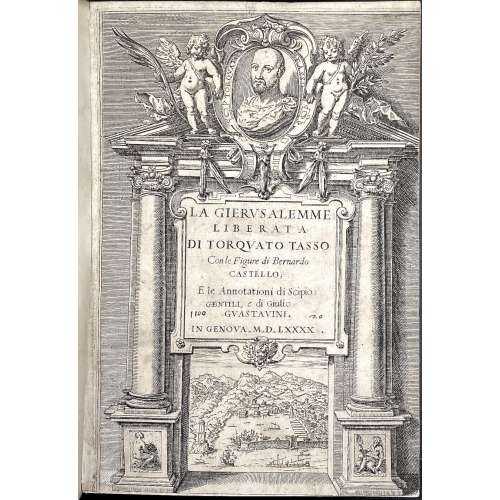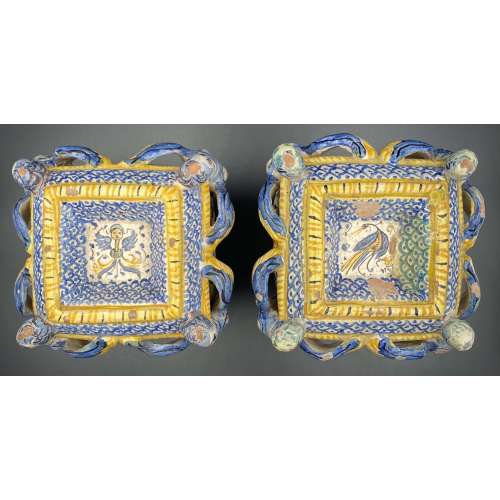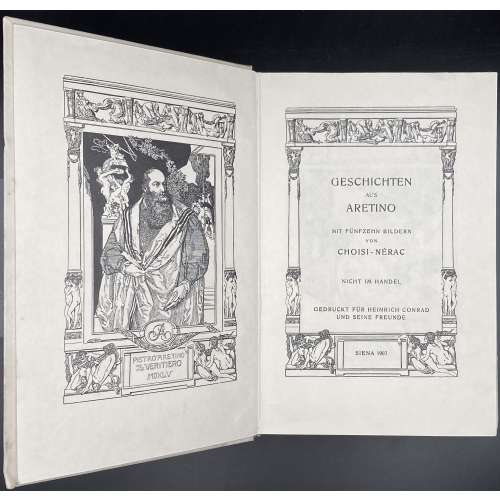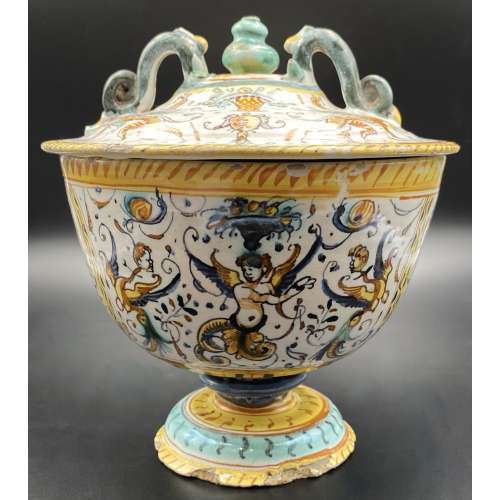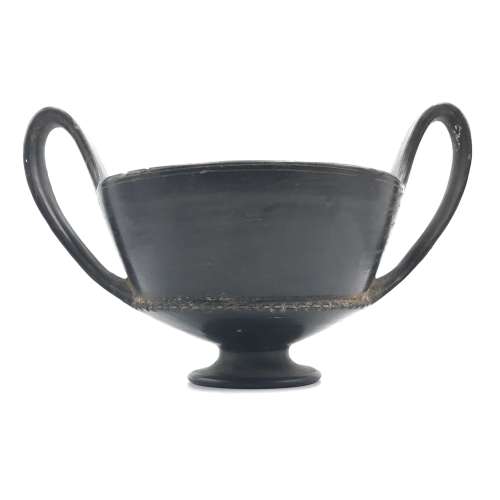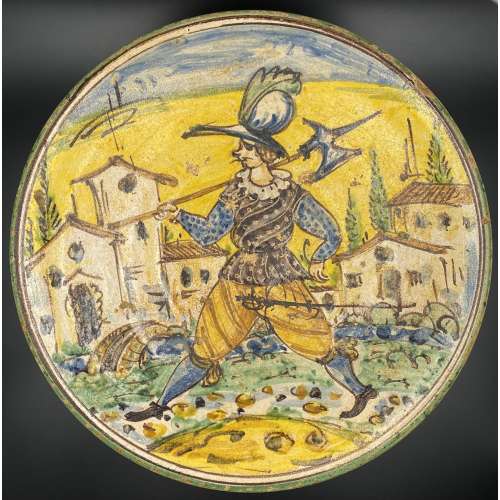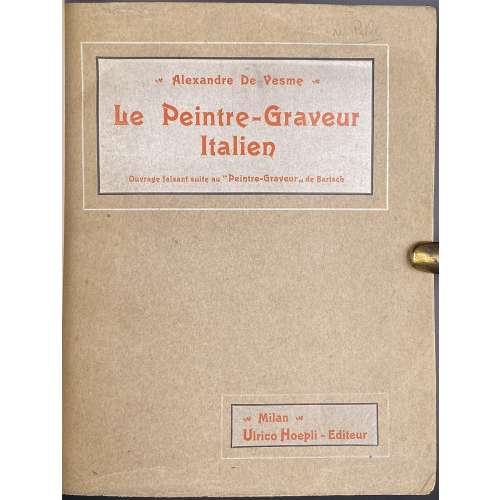Title-page: APOLOGIA | DEL S. TORQVATO | TASSO. | IN DIFESA DELLA SVA | GIERVSALEMME | LIBERATA. | Con alcune Opere, partien in accusa, | partein difesa dell Orlando Furioso | dell’Ariosto. | Della Gierusalem- | me istessa , e dell’Amadigi | del Tasso Padre. | I titoli tutti si leggono nella feguente | facciata. | con privilegi. | {publisher’s device} | In Mantoua, Per Francesco Osana. | M D LXXXV. || 1
st blank π
1, [a]-a
8; (9 leaves, 18 pp., unpaginated)
Divisional t.p. (1): DE GLI | ACCADEMICI | DELLA CRVSCA | DIFESA DELL’ ORLANDO | FVRIOSO DELL’ ARIOSTO | Contra’l Dialogo dell’Epica | poesia di Camillo | Pellegrino. |
Stacciata prima. | {woodcut} ||; A-E
12 [2]A
1 (61 leaves, 122 pp., unpaginated).
Divisional t.p. (2): APOLOGIA | DEL S. TORQVATO | TASSO. | IN DIFESA DELLA SVA | GIERVSALEMME | LIBERATA. | {publisher’s device} | IN MANTOVA, |—| Per Francesco Osanna. | MDLXXXV. || [2]A
11 2B-[2]I
12 [2]K
4, pp. [2] 3-219 [3] (111 leaves, 222 pages).
Divisional t.p. (3): DELL’ | INFARINATO | ACADEMICO | DELLA CRVSCA … etc. |
MDLXXXV. |
Con licenza de’ Superiori. || [3]A-[3]G
12, pp. [2] 3-164, 163 (i.e. 165) [3] (84 leaves, 168 pages).
Divisional t.p. (4): RIPOSTA | DEL S. TORQVATO | TASSO, | ALLA LETTERA | DI BASTIAN ROSSI, …etc. |
MDLXXXV. |
Con licenza de’ Superiori. || [4]A-[4]E
12 F
8, ([4]B
3 i.e. [4]A
3), pp. [2] 3-135 [1] (68 leaves, 136 pages).
Divisional t.p. (5): DISCORSO | IN TORNO | A’CONTRASTI, | CHE SI FANNO | SOPRA… ect. |
M D LXXXVI. || [5]A-[5]D
12 E
4, pp. [2]3-67, 66 (i.e. 68), 92 (69), 70-73 (70-73), 94 (74), 95 (75), 76, 77, 98-115 (78-95), 112 (96), 97-100, [4] (52 leaves, 104 pages).
Divisional t.p. (6): PARERE | DEL SIGNOR | TORQVATO | TASSO. | SOPRA IL DISCORSO | del Signor Horatio Lom- | bardello intorno a’ | contrasti,&c. … etc. | M D LXXXVI. || [6]A
12 [6]B
6 (incl. last blank), pp. [1-5] 6-33 [3] (18 leaves, 36 pages).
Collation: 12mo; π
1, a
8, A-E
12, [2]A-[2]I
12 [2]K
4, [3]A-[3]G
12, [4]A-[4]E
12 F
8, [5]A-[5]D
12 E4, [6]A
12 [6]B
6 (incl. last blank), total 403 leaves, 806 pages, in-text woodcut head- and tailpieces, and initials.
Binding: 14.4 x 9 cm, 19
th-century quarter calf over marbled boards, raised bands, gilt-bordered compartments, gilt lettering, three flyleaves at the front and back, "The Robin Collection" bookplate to front pastedown.
Provenance: The Robin Collection.
Contributors:
Torquato Tasso (Italian, 1544 –1595) – author.
Orazio Ariosto (Italian, 1555 – 1593) – author.
Ludovico Ariosto (Italian, 1474 – 1533) – author.
Camillo Pellegrino (Italian, 1527-1603) – author.
Francesco Osanna [Osana] (Italian, fl. 1549 – 1608) – printer, publisher.
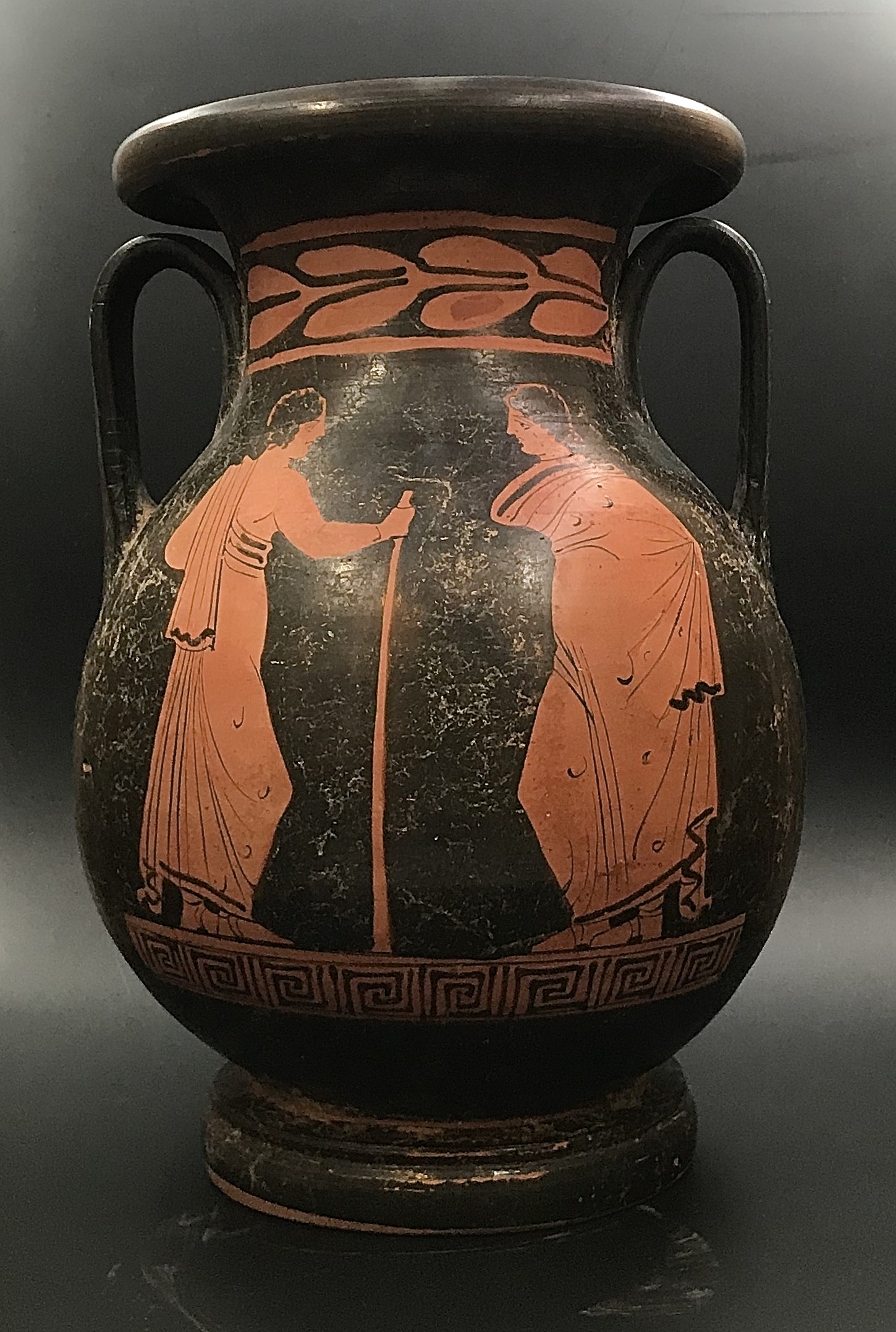
 This vase is attributed to Apulia, ca. 330 BCE. Passeri was probably wrong to attribute this type of vessel to Etruscan vase painting, produced from the 7th through the 4th centuries BC.
Contributors:
Giovanni Battista Passeri (Italian, 1694 – 1780) – author.
Francesco Moücke (Italian, fl. 1729 – 1787) – publisher.
Pope Clement XIV [Ganganelli, Giovanni Vincenzo Antonio] (Italian, 1705 – 1774) – dedicatee.
Artists:
Mauro Soderini (Italian, 1704 – after 1751)
Carlo Spiridione Mariotti (Italian, 1726 – 1790)
Lorenzo del Moro (Italian, 1677 – 1735)
Engravers:
Theodor Vercruys [Teodoro Vercruysse] (Dutch, 1678 – 1739)
Francesco Allegrini da Gubbio (Italian, 1587 – 1663)
Carlo Bartolomeo Gregori (Italian, 1702 – 1759)
This vase is attributed to Apulia, ca. 330 BCE. Passeri was probably wrong to attribute this type of vessel to Etruscan vase painting, produced from the 7th through the 4th centuries BC.
Contributors:
Giovanni Battista Passeri (Italian, 1694 – 1780) – author.
Francesco Moücke (Italian, fl. 1729 – 1787) – publisher.
Pope Clement XIV [Ganganelli, Giovanni Vincenzo Antonio] (Italian, 1705 – 1774) – dedicatee.
Artists:
Mauro Soderini (Italian, 1704 – after 1751)
Carlo Spiridione Mariotti (Italian, 1726 – 1790)
Lorenzo del Moro (Italian, 1677 – 1735)
Engravers:
Theodor Vercruys [Teodoro Vercruysse] (Dutch, 1678 – 1739)
Francesco Allegrini da Gubbio (Italian, 1587 – 1663)
Carlo Bartolomeo Gregori (Italian, 1702 – 1759) 

